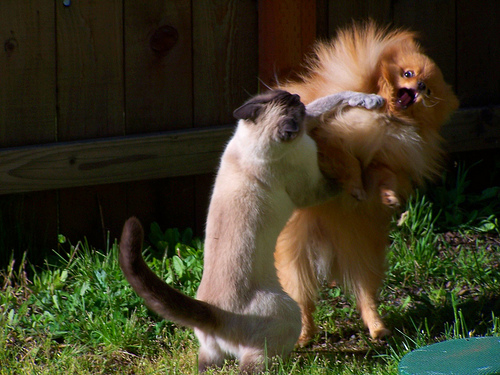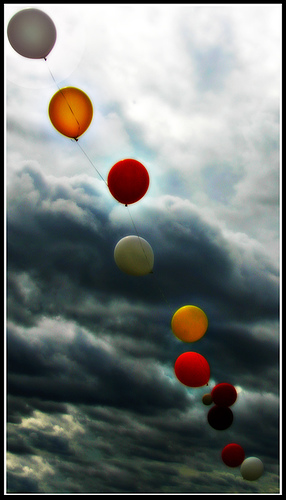The Punch Is in the Details
As we examine the different stationary camera shots, we want to take a moment to look at the Insert Shot. This is a commonly used shot needed is screenplays when a continuous action is interrupted in order to focus on a detail. As mentioned in earlier posts, the main reason for using cinematic technique, and in specific choosing particular camera shots, is to make the viewer (or reader of a novel) pay attention to specific things. You, as the writer, want to reader to notice certain things in your scenes, and using the appropriate camera shot will give it the most punch. It’s said the devil is in the details, but I’ll say the punch is what’s really in the details. And an Insert shot may be just the punch you want.
We Interrupt this Message . . .
Some of the stationary shots used in scripts are brief but purposeful. When reading screenplays, you may not see the directives Insert or Angle On, for example, but the way the script is written implies this type of shot. Take a look at the excerpt from The Fugitive in last week’s post. See where it reads “IMPACT: A hundred tons of STEEL SLAMS into the bus” and “It’s the key ring”? These are Inserts.
With Insert, the idea is to briefly interrupt the action to hone in on one specific thing that needs to be given full attention. It may not be visible in the current shot, as shown in this excerpt. Inserts are mainly used in reference to objects like a clock—or actions, like putting a key in a car’s ignition. The action before the impact of the train follows Kimble as he’s limping away from the bus, so in order to cut to the crash behind him, the screenwriter uses an Insert to show this happening.
You’ll see this in action/suspense movies and books. You’re watching a car chase, and then you see a few seconds of the front wheel before cutting back to the car crashing. In a novel you might write: “The last bolt came loose and fell onto the road.” In other instances, an Insert shot can be the character abruptly noticing something that shifts the reader’s attention. Perhaps he hears glass breaking and turns. The Insert shot would be the description of the plate-glass window shattering and glass flying into the room. You’re still in the character’s POV, but the emphasis now is on the inserted action imposed on the scene.
Remember Who’s Witnessing the Action
It’s important to remember to stay in your point-of-view character’s head when inserting details this way. Movies, for the most part, give an outside POV, unless the screenwriter specifies the camera shot called POV, which means for the camera to behave as though it is seeing through the character’s eyes (we’ll go over that in more depth in later posts). In a film, a director has license to jump from place to place to capture the action in the most effective way, and in sense the camera is the “outside observer.” But unless you are writing a novel in an omniscient POV, which is not often done and is not easy to do well, you are limited to showing only what your character sees.
So if your POV character is in a car with the wheel about to fall off, she can only sense it by the movement of the car and the sounds she hears, or she has to look out her window and see the wheel wobbling. Here’s a good reason to think through who your POV character will be in a scene for the best effect. Sometimes it’s an observer watching from a Full Shot or some other angle, who can best witness the events needed to be shown in your novel and whose reaction will heighten the tension and help advance the plot.
Of course, if you are writing in first person, you are limited to only what your one character experiences, but you can find creative ways to show what needs to be shown in each scene through the use of various camera shots.
In that scene I excerpted from Shibumi in the previous post, Trevanian throws in a couple of well-placed Inserts. Remember that cracked faceplate on his diving mask? When Hel realizes his jaw his broken, he thinks “uh-oh,” and that shifts his attention to his mask.
He tugged it from its pouch and examined it in the light of his lamp, which was yellowing because the batteries were fading. The face plate was cracked.
It was a hairline crack. It might hold, so long as there was no wrench or torque on the rubber fittings. And what was the chance of that, down in the ripping current at the bottom of the Wine Cellar? Not much.
Many writers intuitively use Insert shots without much thought. If we’re describing something happening in a scene, we will call attention to a detail that’s important. But think about how you might do that, and instead of just telling that your character notices something, show it by inserting it in a way the reader can see it clearly.
It seems to imply a Close-Up, but an Insert could be a shot of the burning hot sun above beating down on a thirsty traveler in a desert. Or a bomber plane streaking through the sky aflame. If you were going to show a longer bit of action, like the plane continuing on over the landscape, burning and smoking, and the pilots ejecting, the script would use a Cut To and consider that another segment of filming rather than an Insert. Think “brief glimpse.”
This week, think about finding some places in your scenes in which you could use an Insert. Is there a key moment when a small detail needs to be briefly shown? Rather than telling what’s important, can you cut to a visual Insert and show what your character notices? Remember, what your character pays attention to is what your reader will pay attention to, and it’s up to you to bring those important clues to the forefront. Using an Insert Shot may just be the trick!












Thank you for once again writing something that makes me think, write, revise with a little more knowledge than I had yesterday. Love you!
An interesting technique that I like to use is use a metaphor to explain something happening that is outside of the immediate POV. For instance, if the wheel is going to fall of the car (per the posted example) and the driver has no way to receive this other than via smell and sound, putting into a metaphor can be quite effective to clearly bring attention to the tire. “The smell of burning rubbing came to me through the cracked window. Something was wrong. Such thoughts were confirmed by the bumping and shaking of this roller-coaster I was on, careening down the road: a roller-coaster on three wheels. Confirmation enough.”